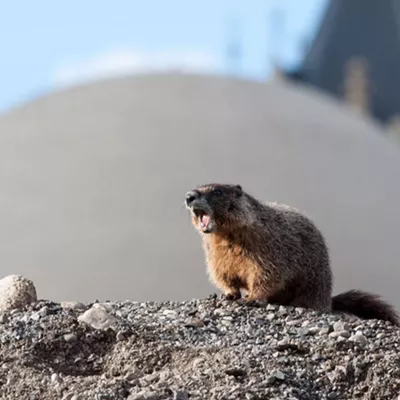Patenting Life
[
{
"name": "Broadstreet - Instory",
"component": "25846487",
"insertPoint": "4",
"requiredCountToDisplay": "4"
},{
"name": "Broadstreet - Empower Local",
"component": "27852456",
"insertPoint": "8",
"requiredCountToDisplay": "8"
},{
"name": "Broadstreet - Instory",
"component": "25846487",
"insertPoint": "12",
"requiredCountToDisplay": "12"
},{
"name": "Broadstreet - Instory - 728x90 / 970x250",
"component": "27852677",
"insertPoint": "18",
"requiredCountToDisplay": "18"
},{
"name": "Broadstreet - Instory",
"component": "25846487",
"insertPoint": "5th",
"startingPoint": "23",
"requiredCountToDisplay": "24",
"maxInsertions": 100
}
]
by Cara Gardner
As the debate rages on over the safety and use of genetic modification in foods and farming, another related debate is heating up: patents on life.
Patents are essentially registrars of knowledge; they put a figurative and often literal stamp on something to show that it is owned and controlled by someone or something. At present, biotechnology corporations are patenting seeds, plants, even the gene sequences of organisms.
"First of all, patents on crops are not new," says Jim Cook, endowed chair of wheat research at Washington State University in Pullman. "When you buy an apple with a sticker on it, you're paying a royalty for the people who own that apple tree. Now, when a company spends $5 billion dollars to perfect a gene, they have a right for a return on investment, and their stockholders have a right."
Cook says patenting can be useful. "With patents it's in the public domain and we can read the patent and the claims that are made. It's an advantage. But," Cook admits, "it has gotten out of control."
Biotech corporations are patenting and privatizing natural resources in the developing world, sometimes forcing indigenous communities to pay royalties on property they've used for generations.
Monsanto, one of the world's largest biotech firms, patented a gene of the Neem tree in India. Locals have used it for centuries for medicinal purposes. RiceTech, an American plant-breeding company, established a patent on a strain of rice that it calls "Basmati." Indian and Pakistani farmers have grown and bred varieties of this rice for generations.
The University of Wisconsin patented a sweet compound of the berry J'oublie, which comes from Gabon. The university is working to ensure that its product is profitable in the sweetener market and is trying to develop a version of it in laboratories so there will be no need to harvest it in Africa. Quinoa, as another example, originated in the Andes, where it is an important local crop. Two Colorado State University scientists patented one of its varieties, called "Apelawa," and any of its derivatives. Bolivian quinoa producers may have to pay royalties to a university that did nothing to discover Apelawa.
These examples are by no means exhaustive. How is it possible for previously existing, already known and naturally occurring resources to be patented? Researchers may change the genetic sequence only a tiny bit, then claim it's an original product.
"That's really the basis to a lot of challenges with patenting," says William Aal, vice president of the Washington Biotechnology Action Council. "Scientists say, 'We're not patenting the gene, [we're patenting] the process we use to extract the gene.' They claim everything is a process."
In 1999, the World Trade Organization (WTO) implemented the Trade-Related Intellectual Property Rights (TRIPS) agreement. All 132 nations that are members of the WTO must abide "without exception" by TRIPS, which states researchers can "take out patents on the products and processes of biotechnology." This can include anything from new micro-organisms to gene sequences. Some fear that the TRIPS agreement will allow companies exclusive monopolies in biological resources all over the world -- perhaps undercutting existing industries (as happened to vanilla bean growers once imitation vanilla was developed) and keeping progress from the underdeveloped Third World.
But the issue may not be dead yet, as many developing countries are demanding that the TRIPS agreement be put back on the table for negotiations. At the upcoming WTO summit, which will be held this September in Cancun, Mexico, Third World countries plan to raise the issue of biotech in agriculture and discuss rethinking TRIPS.
"The U.S. continues to pressure countries like India and Brazil to change their national patenting laws," says Aal. "In those countries, the laws say patents related to food and medicine are not a valid use of public resources," meaning patenting such natural resources is a foreign concept.
Cook says despite the WTO ruling, an ethical question remains. "If it's patented and put in the public domain, that's one thing. But in the private domain, that's different," he says.
One solution is in place in Turkey, he says. When U.S. scientists collect biological samples there, a Turkish scientist is present to maintain the same samples and data, and the Turkish government retains certain rights to the technology.
Publication date: 07/17/03
As the debate rages on over the safety and use of genetic modification in foods and farming, another related debate is heating up: patents on life.
Patents are essentially registrars of knowledge; they put a figurative and often literal stamp on something to show that it is owned and controlled by someone or something. At present, biotechnology corporations are patenting seeds, plants, even the gene sequences of organisms.
"First of all, patents on crops are not new," says Jim Cook, endowed chair of wheat research at Washington State University in Pullman. "When you buy an apple with a sticker on it, you're paying a royalty for the people who own that apple tree. Now, when a company spends $5 billion dollars to perfect a gene, they have a right for a return on investment, and their stockholders have a right."
Cook says patenting can be useful. "With patents it's in the public domain and we can read the patent and the claims that are made. It's an advantage. But," Cook admits, "it has gotten out of control."
Biotech corporations are patenting and privatizing natural resources in the developing world, sometimes forcing indigenous communities to pay royalties on property they've used for generations.
Monsanto, one of the world's largest biotech firms, patented a gene of the Neem tree in India. Locals have used it for centuries for medicinal purposes. RiceTech, an American plant-breeding company, established a patent on a strain of rice that it calls "Basmati." Indian and Pakistani farmers have grown and bred varieties of this rice for generations.
The University of Wisconsin patented a sweet compound of the berry J'oublie, which comes from Gabon. The university is working to ensure that its product is profitable in the sweetener market and is trying to develop a version of it in laboratories so there will be no need to harvest it in Africa. Quinoa, as another example, originated in the Andes, where it is an important local crop. Two Colorado State University scientists patented one of its varieties, called "Apelawa," and any of its derivatives. Bolivian quinoa producers may have to pay royalties to a university that did nothing to discover Apelawa.
These examples are by no means exhaustive. How is it possible for previously existing, already known and naturally occurring resources to be patented? Researchers may change the genetic sequence only a tiny bit, then claim it's an original product.
"That's really the basis to a lot of challenges with patenting," says William Aal, vice president of the Washington Biotechnology Action Council. "Scientists say, 'We're not patenting the gene, [we're patenting] the process we use to extract the gene.' They claim everything is a process."
In 1999, the World Trade Organization (WTO) implemented the Trade-Related Intellectual Property Rights (TRIPS) agreement. All 132 nations that are members of the WTO must abide "without exception" by TRIPS, which states researchers can "take out patents on the products and processes of biotechnology." This can include anything from new micro-organisms to gene sequences. Some fear that the TRIPS agreement will allow companies exclusive monopolies in biological resources all over the world -- perhaps undercutting existing industries (as happened to vanilla bean growers once imitation vanilla was developed) and keeping progress from the underdeveloped Third World.
But the issue may not be dead yet, as many developing countries are demanding that the TRIPS agreement be put back on the table for negotiations. At the upcoming WTO summit, which will be held this September in Cancun, Mexico, Third World countries plan to raise the issue of biotech in agriculture and discuss rethinking TRIPS.
"The U.S. continues to pressure countries like India and Brazil to change their national patenting laws," says Aal. "In those countries, the laws say patents related to food and medicine are not a valid use of public resources," meaning patenting such natural resources is a foreign concept.
Cook says despite the WTO ruling, an ethical question remains. "If it's patented and put in the public domain, that's one thing. But in the private domain, that's different," he says.
One solution is in place in Turkey, he says. When U.S. scientists collect biological samples there, a Turkish scientist is present to maintain the same samples and data, and the Turkish government retains certain rights to the technology.
Publication date: 07/17/03















